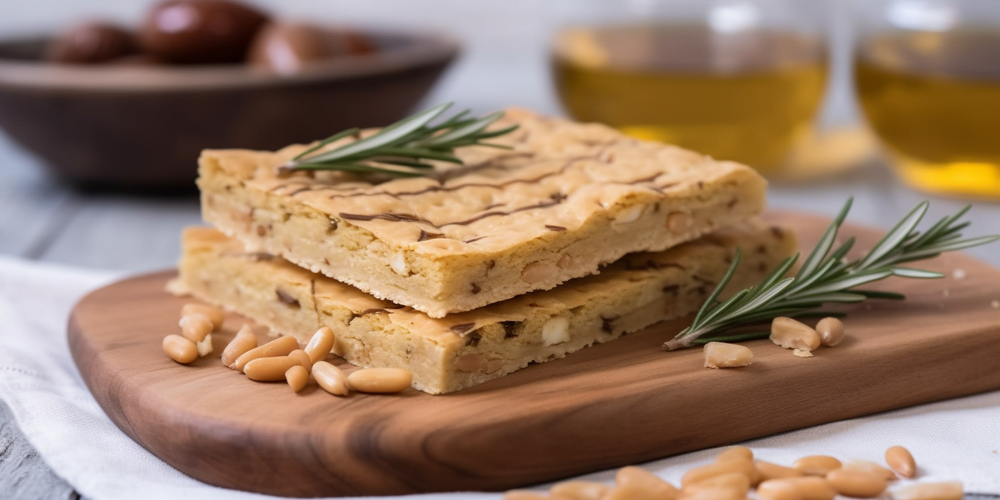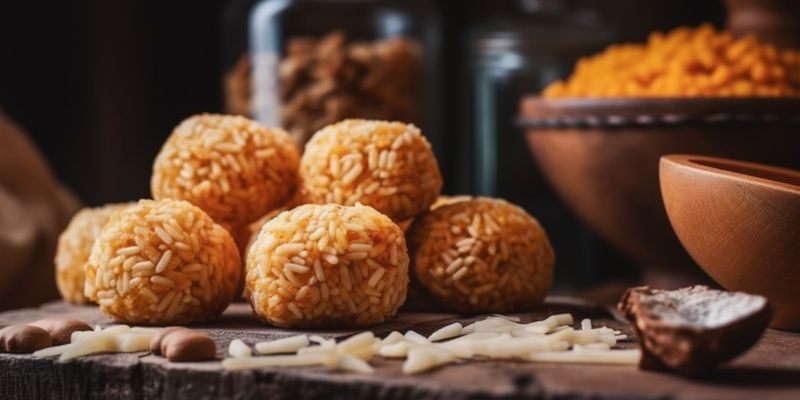
Introduction
Farinata is a traditional Italian flatbread made from chickpea flour, water, and olive oil. This simple and gluten-free recipe is perfect for a quick lunch or snack, and it’s also vegan-friendly. The batter is easy to make and can be prepared in advance, so you can have fresh farinata anytime you want. In this blog post, we’ll show you how to make this delicious and healthy dish step-by-step.
Ingredients
Here are the ingredients you’ll need to make 4 portions of farinata:
- 200g chickpea flour
- 2 cups water
- 2 tbsp olive oil
- 1 tsp salt
- 1/2 tsp black pepper
- 1 red onion
- 1 sprig of rosemary
Instructions
- Preheat the oven to 450°F (230°C).
- In a large mixing bowl, whisk together the chickpea flour, water, olive oil, salt, and black pepper until the batter is smooth and bubbly. Let it rest for at least 30 minutes, or up to 12 hours in the refrigerator.
- Slice the red onion thinly and chop the rosemary.
- Pour the batter into a greased 9-inch (23 cm) baking dish or skillet. Top with the sliced onion and rosemary.
- Bake for 25-30 minutes, or until the farinata is golden brown and crispy on the outside and cooked through on the inside.
- Remove from the oven and let cool for a few minutes before slicing and serving.
Variations
Farinata is a very versatile dish that can be customized with different toppings and flavors. Here are some ideas to get you started:
- Garlic and herbs: Add minced garlic, chopped rosemary, and thyme to the batter for a savory and aromatic farinata.
- Tomato and basil: Top the farinata with sliced tomatoes, fresh basil, and a drizzle of olive oil for a Mediterranean twist.
- Mushrooms and spinach: Sauté sliced mushrooms and spinach with garlic and onion, and add them to the batter before baking for a hearty and nutritious farinata.
- Vegan pesto: Spread a layer of vegan pesto over the farinata and top with cherry tomatoes and olives for a delicious and colorful appetizer.
Conclusion
Farinata is a delicious and easy-to-make chickpea flatbread that’s perfect for a quick lunch or snack. This gluten-free and vegan recipe is packed with flavor and can be customized with your favorite toppings and flavors. Try it today and enjoy a taste of Italy in your own home!
FAQ
What is Farinata?
Farinata is a traditional Italian flatbread made with chickpea flour, water, olive oil, and salt. It is a popular street food in Liguria, Tuscany, and other regions of Italy.
Is Farinata gluten-free?
Yes, Farinata is naturally gluten-free because it is made with chickpea flour.
Can I make Farinata ahead of time?
Farinata is best served fresh, but you can make it ahead of time and reheat it in the oven or toaster oven. Be sure to store it in an airtight container in the refrigerator.
How do I store leftover Farinata?
Store leftover Farinata in an airtight container in the refrigerator for up to 3 days. Reheat it in the oven or toaster oven before serving.
What can I serve with Farinata?
Farinata is often served with fresh herbs, such as rosemary, and a sprinkle of sea salt. You can also top it with vegetables, cheese, or cured meats.
Can I make Farinata vegan?
Yes, you can make Farinata vegan by omitting the cheese and using a vegan-friendly oil, such as coconut oil.
How do I know when Farinata is done?
Farinata should be golden brown and crispy on the edges when it is done. The center should be set but still slightly soft.
How thick should I make Farinata?
Farinata should be about 1/4 to 1/2 inch thick. Thicker Farinata will take longer to cook and may not be as crispy.
Can I make Farinata in a regular oven?
Yes, you can make Farinata in a regular oven. Preheat the oven to 450°F and bake the Farinata for 20-25 minutes, or until golden brown and crispy.
Is Farinata a healthy dish?
Farinata is a healthy dish because it is high in protein and fiber, and low in fat and calories. It is also naturally gluten-free and vegan-friendly.



